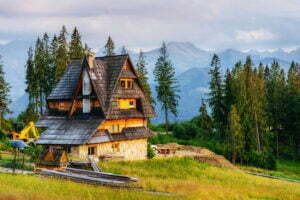For centuries, Native Americans have been forced to live in sub-standard housing on reservations. The government has failed to provide adequate funding for housing, leaving many families living in poverty. This has led to high rates of homelessness and poor health among Native Americans, as well as the community being unable to keep up with housing maintenance, such as getting a residential roof replacement. Keep reading to learn more about the history of housing for Native Americans.
The 17th Century

In the 17th century, indigenous people’s housing varied greatly depending on the region. The Inuit, for example, lived in igloos, while the Native Americans lived in wigwams and tipis. The Mayans lived in large, multi-story homes with thatched roofs, while the Incas lived in small, stone houses with thatched roofs. Despite the great diversity in indigenous housing, there were some similarities. Most indigenous people lived in villages, and most villages were surrounded by a fence or a wall. Villages were also typically located near a river or a lake, in order to have access to clean water. Indigenous people’s homes were usually made out of natural materials, such as wood, stone, and mud. They were very simple, and usually had just one or two rooms. The floors were typically made out of dirt, and there was no electricity or running water. DNA testing for Native American people is available if you want to track your family history of housing and migration.
The 18th Century
Housing for Indigenous people in the 18th century ranged from wigwams to longhouses. Longhouses were generally two stories high, with the upper story used for storage and the lower story used for living quarters. They could be quite large, housing up to 60 people. Wigwams were made of poles covered with bark, hide, or woven mats. They were small, usually housing only a few people. Both wigwams and longhouses were easy to build and could be quickly put up or taken down. This was important, as Indigenous people often moved around to follow the game they hunted.
The 19th Century
In the 19th century, indigenous people’s housing varied greatly from region to region. However, there were some general trends that could be observed. In general, indigenous people lived in structures that were very different from those of the European settlers. Many indigenous people continued to live in traditional dwellings, such as tipis, wigwams, and longhouses. Others lived in more European-style housing, such as log cabins.
The 20th Century

Though the 20th century was a time of great technological advances and growing prosperity for much of the United States, they experienced increasing poverty, social dislocation, and cultural erosion. One area in which this was particularly evident was in Native American housing. Prior to the 20th century, Native American housing was typically designed and constructed according to traditional methods and using natural materials available in the local environment. However, as they were forced to relocate to increasingly remote areas in order to make way for white settlers, they were often unable to build housing that met their needs in terms of design, comfort, or durability. The result was that, by the middle of the 20th century, many were living in ramshackle, unhealthy, and unsafe dwellings.
Today
There are many housing issues that Native Americans face today. One of the biggest is the lack of affordable housing. According to the Department of Housing and Urban Development, in 2016, the median housing cost for a Native American household was $861 per month, compared to $1,522 for all households. This means that Native Americans are spending more than 30 percent of their income on housing, compared to the recommended 30 percent or less. There are a number of reasons for this disparity. For one, many Native American communities are rural, and the cost of living is higher in rural areas than in urban areas. Additionally, many Native American communities are located on tribal lands, which are often not included in mainstream housing programs. And, finally, many Native Americans face discrimination when trying to access affordable housing.
Overall, the history of housing for Native Americans is important as it has greatly impacted their present-day lives. Through the years, they have experienced a number of challenges in regard to their housing, which has led to various negative consequences. Consequently, it is essential that their history be understood in order to create better and more effective housing solutions for them in the future.










